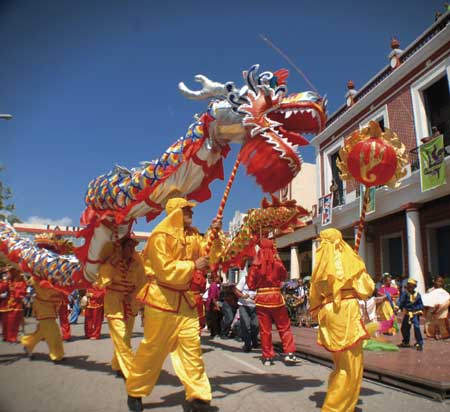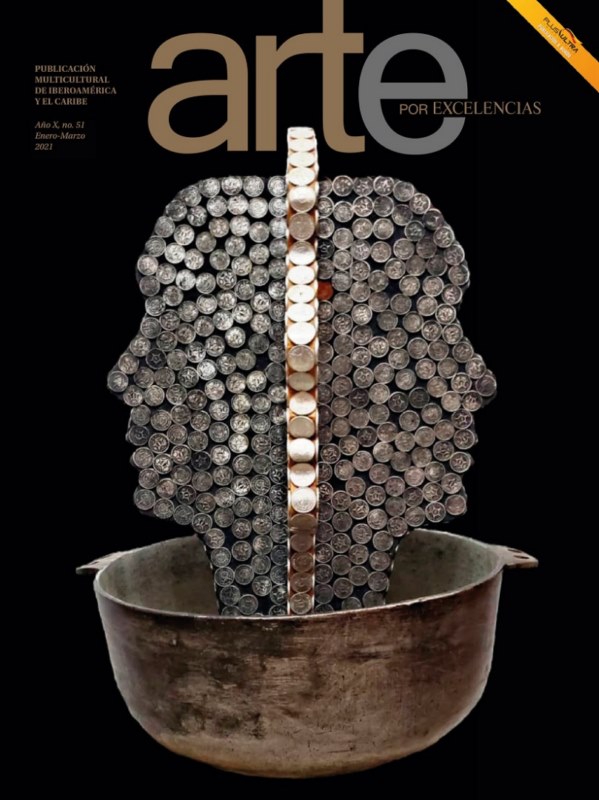 There are causalities in the spiral of development as how a regional provincial meeting of young artists became an International Festival of Artistic Youth and Cultural Promoters that aspires in each edition to be a global festival in a provincial city, seven hundred kilometers from Havana.
There are causalities in the spiral of development as how a regional provincial meeting of young artists became an International Festival of Artistic Youth and Cultural Promoters that aspires in each edition to be a global festival in a provincial city, seven hundred kilometers from Havana.
In our prism, I am talking about more than a dozen artists and promoters, in which prevailed the desire to respect religious iconography of May 3rd, but under the decision to decontextualise it and turning our proposal into a perennial tribute to the pagan and popular event. The new symbols that were created in group work sessions, and the classification of the event days, from May 2nd through the 8th, were accompanied by searching in the geography of the island of any artistic project that could support it, thanks to the support and recognition of the national presidency of the Hermanos Saiz Association (AHS Association). The Axe of Holguin is the best example of these appropriations: in a working session of the Council we decided its realization in papier mache on a wire structure, eight meters long by four wide, to be placed at the same height as the cross as a symbol of cultural resistance.
With the intention to be singular in regard to the Day of the Cross, the new Pilgrimages forward one day to the tradition, with an extensive program of cultural activities to welcome the delegates.
The first day is the Concert of Tradition, by the Rodrigo Prats Lyric Theater, with Spanish and Cuban zarzuela. From there carriages pulled by horses come with flags of the participating countries, with a representation of the delegations, for the parade through the Libertadores Avenue. Participants pay homage to the heroes of the American Revolution.
The caravan arrives at Bosque de los Héroes always around midnight, and places the last wreath in front of the urn containing the remains of Calixto Garcia Iniguez, the General Major of the three wars.
The inaugural parade on May 3rd from the modern area to the historical center was designed to enable the population to welcome artists and participating delegates, so carriages, convertible cars, double decker bus tours and cargo truck where human groups and arts companies are seen. It happens from the monument to Che Guevara to the Periquera building, National Monument, inversely to the motorcade in the morning. Facing the presidency waiting in the building of the Periquera greetings and performances by guest artists are done.
The output of the cuban symbol and the Axe of Holguin are the anticlimax of the grand finale of the inaugural show, when a giant flag leaves in the hands of the AHS presidents of the provinces, escorted by the Axe. Both symbols leave the inside of the building after the historic gates of the Periquera are opened, which include two doorknockers.
When the Axe reaches the top, it should be superimposed on the Tower during the week, to preside over the festivities, and becomes a source of tourist attraction.
The Ode to Joy, Beethoven's Ninth Symphony is sung from the balconies of The Periquera Museum or Casa Consistorial in the opening day, and is reiterated in various versions-from classical to popular-even during the very act of closing of each event of the Festival, to open or close each session.
The dedication of three days to tradition and three days to modernity or contemporaneity characterizes and determines the inclusion of actions in the program. May 2nd, 3rd, and 4th are to honor the founding fathers of art and culture and to refer the role of traditional folk traditions of culture and art in general. May 6th, 7th and 8th identify the way to what has been called modernity or contemporary, that includes it, and is to highlight the most current and transgressive proposals.
Transit Day is always May 5th, when exhibitions, books presentations, artistic work from fathers to sons, or explicitly from an artistic generation to other occur. Likewise a gala is held at the Calixto Garcia Park to illustrate the transition to modernity and therefore to the contemporary.
The closing of the festival takes place in the modern area of the city, on May 7th through May 8th. It is when the aboriginal Axe is hoisted by hand by the crowd at the ceremony, with a giant rope and a pulley, by the ramp of the tallest modern building of city, in front of Cerro de la Cruz, as paradigm that vindicates the Aboriginal culture of the area.
The tree planting with soil from the participating countries comes next. The event takes place prior to the hoisting, surrounded by the flags of all delegations, in the front area of the tallest buildings in the city.
The system of events within the Festival covers various art forms for the invasion of over fifteen public spaces, located in the squares and parks of the City of Parks: The Congress and Memoria Nuestra Award; Babel of visual arts; Palabras Compartidas, in literature; The Camara Azul, audiovisual; Dance in Urban Landscapes; Street Theatre in squares and parks; Rockmerías; Hip Hop; Electro-Romerías; Trova in the Casa de la Trova; Poetry readings and songs in The Angelote; Fiesta de los Abrazos for foreign students; Photofest for amateur photography; Roots, with carrier groups and players of popular culture; Vivencias, for art instructors of the José Martí Brigade; major concerts and dance; and May Bloguerías.
The text of the call for the Romerías de Mayo maintains the principle that "the Hermanos Saiz Association, young artists and cultural promoters calls from Holguin ...". Pilgrimages are defined "as a participatory festival of different forms of art and culture in terms of the codes of tradition and modernity." It also states that in this party there is place for "the debate on the universality of our cultures, a tribute to the founding fathers, and the more experimental and avant-garde exercises."










